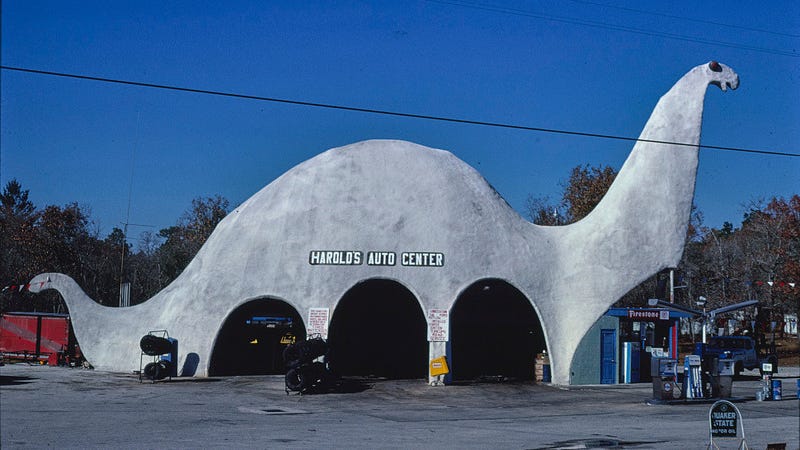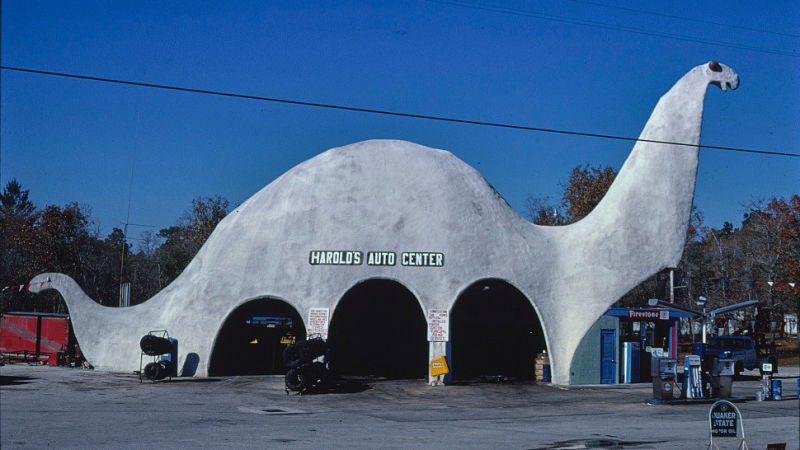
John Margolies spent more than forty years traveling American roads and cataloguing the way cars shaped our built environment. Now, with his photos in the hands of the Library of Congress, you can have a look at what he found.

Gas stations, car washes, motels and drive-in restaurants feature heavily, demonstrating how roadside architecture had come to serve a supporting role to the stream of vehicles zooming past these structures. Margolies’s color photos demonstrate how the bright paint schemes, neon lighting, and wild signage of roadside buildings came to be designed for maximum impact on passing drivers, enticing them in for a cold drink, a refuel, or a good night’s rest.

Advertisement
According to the Library of Congress blurb, Margolies took these photos as part of an attempt the capture the “vernacular architecture” of the American roadside, which he considered to be threatened by modern architectural trends. Margolies’s efforts were considered an important step in cultivating a Postmodern approach towards architecture and he was awarded a Guggenheim fellowship in 1978 in recognition of his contributions.

Advertisement
The photos are simple, keeping the subjects centered and the colors intentionally saturated. Margolies, whose background was more in architecture than photography, took these photos with a basic Canon camera, 50 mm lens, and ASA 25 mm film.

Advertisement
The Library of Congress digitized these photos in 2016 after Margolies passed at 76. I’ve collected a few of my favorites here, but the entire collection is available for view on the Library of Congress’s Flickr account here.













